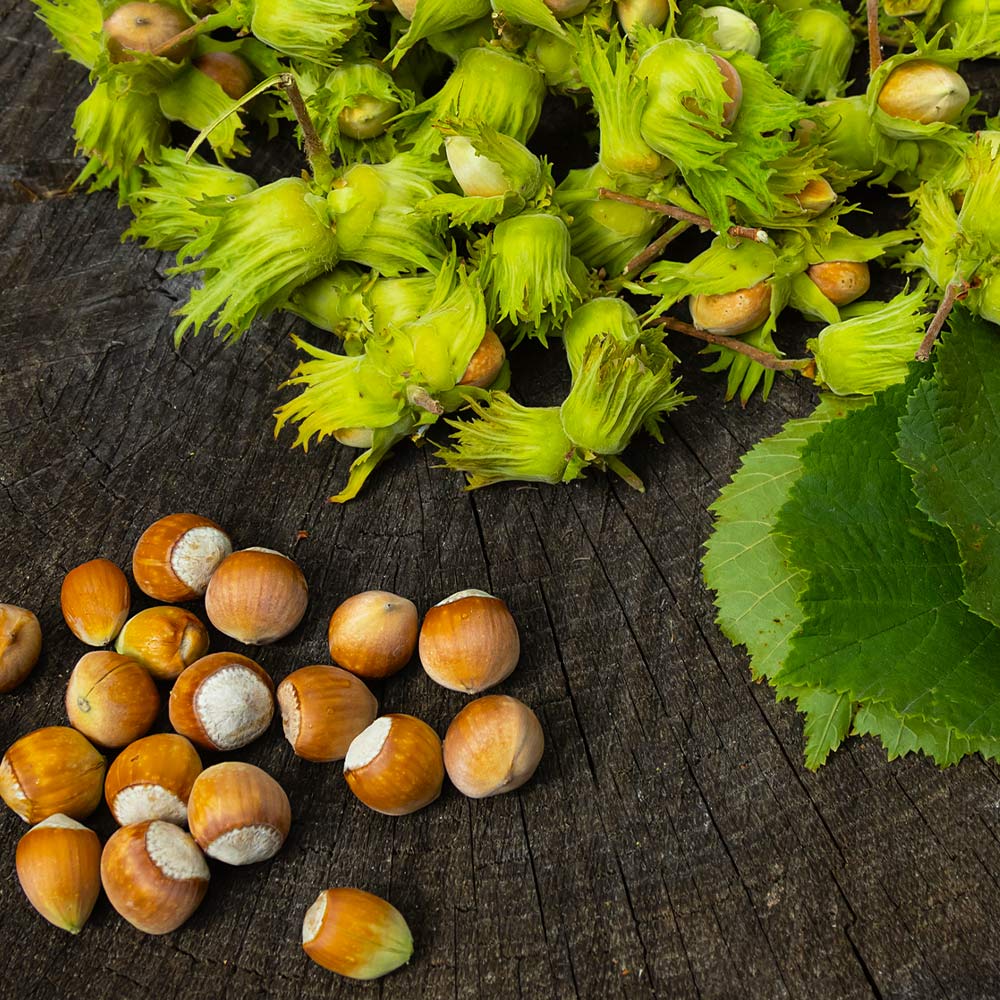Table of Contents
Are you a fan of delicious hazelnut spread or hazelnut coffee powder? Do you want to know where this aromatic hazelnut comes from? Keep on reading and stay here with us as we have something exciting for you. We will enlighten you with the hazelnut tree and its journey from a plant to our homes in multiple edible forms. The joy of enjoying hazelnut in its edible form is indescribable in words.
Apart from the fact that hazelnut is widely consumed by people worldwide, it has other significance as well. In many parts of Europe, Hazelnut is grown as hedgerows to provide a sustainable life and food to various miniature animals or birds, turning your space into a tiny wildlife reserve. And when it comes to its aesthetic value, hazelnut steals the show with its amazingly twisted branches and exquisite flowers.
The list can be really long when it comes to describing Hazelnuts, but in this article, we will focus more on how you can grow hazelnut trees, along with some caring tips and tricks.
Hazelnut Tree Plant Care & Growing Tips
Before we actually dive into the intensive guide of caring tips for the hazelnut tree, let us make you familiar with a few facts about the tree. The hazelnut tree is self-pollinating or monoecious, which means you will have to install both male and female trees in order to grow hazelnuts.
You may also get amazed when you find some shells under the hazelnut trees. Relax, its natural it is also one of the many specialities of hazelnut trees. Here are some of the factors that contribute to the hazelnut tree plant care.
1. Soil
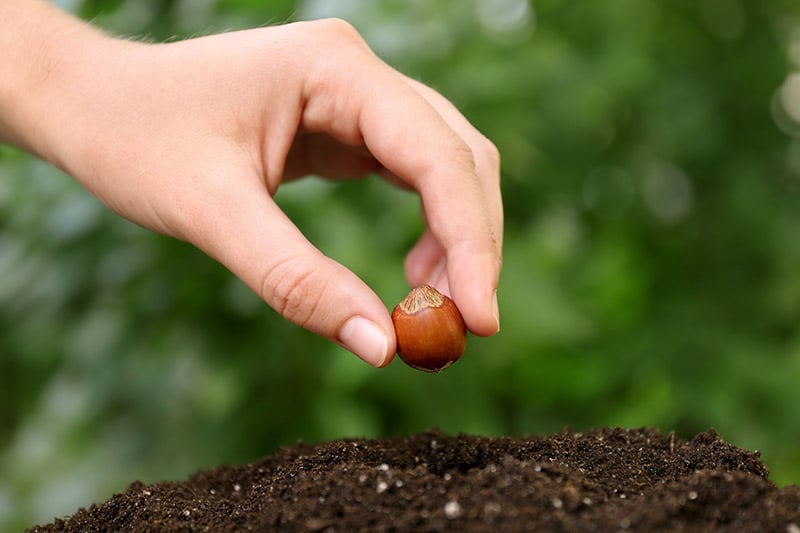
Since hazelnut tree requires soil that has less water-holding capacity, sandy soil is known for doing the same. Hence it is the most suitable soil to grow hazelnut trees over heavy, dense soil such as clayey or rocky soil. But you can grow hazelnut trees in any soil as it is versatile and adaptable.
2. Light
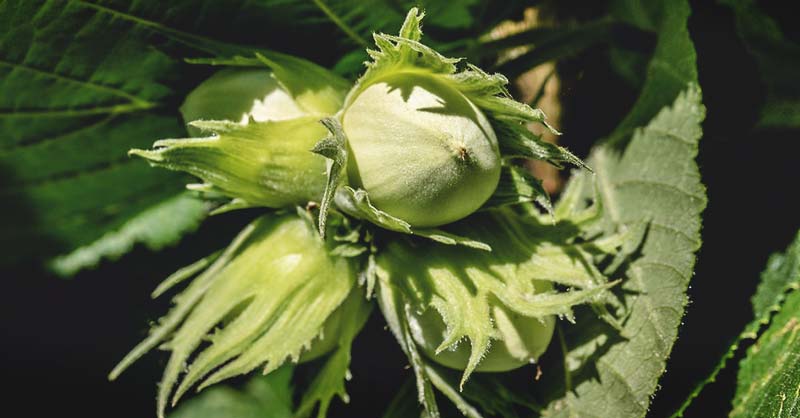
Hazelnut trees love to receive a good amount of sunlight. In order to see the hazelnut tree filled with blooming flowers and numerous nuts, it is pretty much essential to expose it to ample sunlight. However, it is not true that the part of the hazelnut tree in the shade will not bear flowers. The number of flowers on the hazelnut tree will be comparatively less than the one that has received the maximum amount of sunlight.
3. Water
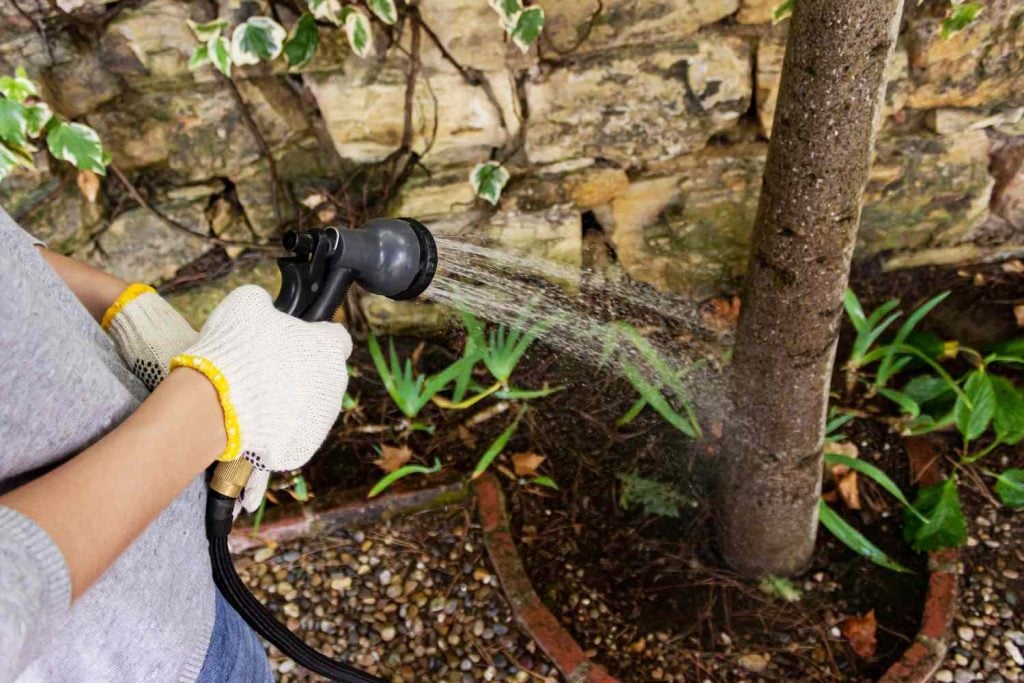
If you do not want your hazelnut tree to die, then make sure you feed it with sufficient water. The flowers and nuts will appear only when the hazelnut tree is watered properly. To ensure that the tree is lusciously green and laden with flowers and nuts even in extremely hot and dry conditions, keep it watered.
4. Fertilizer

Keep your hazelnut trees nurtured with organic fertilizers to make sure that the tree blooms beautiful flowers and bears fruit nuts. The nutrients provided by the fertilizers are essential for the tree to boost growth and stimulate development in trees.
5. Pruning
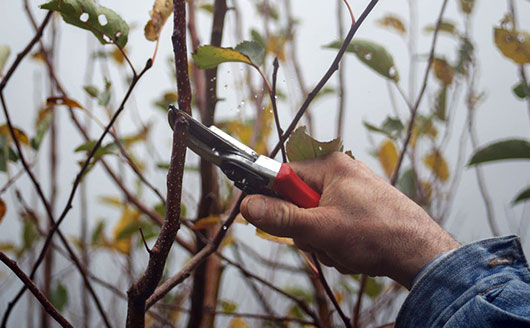
If you notice that the roots of a hazelnut tree develop some suckers, then you may require to prune it. However, hazelnut trees do not need much pruning, but the rise of suckers can lead the tree to attract multiple wild animals or feathered birds. So, if you are aiming to give shelter to these creatures, then you can keep the sucker growing or, otherwise, cut them all off.
Also, if you see any branches drooping and touching the ground, then you can completely cut them all while leaving the upper branches to help the tree stand up straight.
6. Protection of Hazelnut Trees
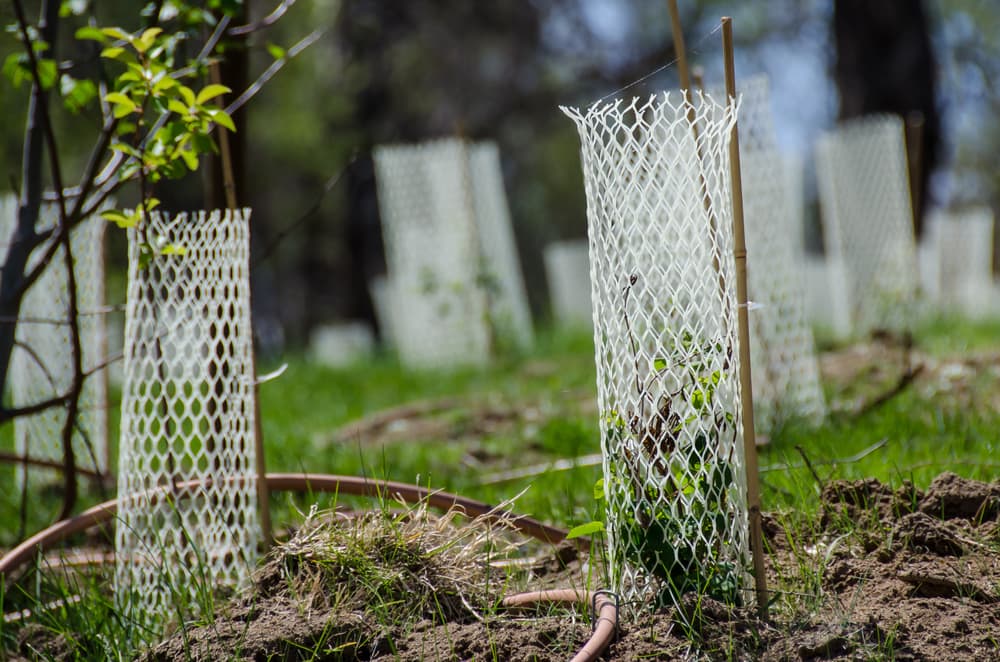
As we are well aware of the fact that the trees grown outside are prone and vulnerable to many wild animals and birds, it is suggested to protect your trees. And especially if you have planted young shrubs, the chances of getting attacked by any wild animal comparatively increase.
Common Problems with Hazelnut Trees
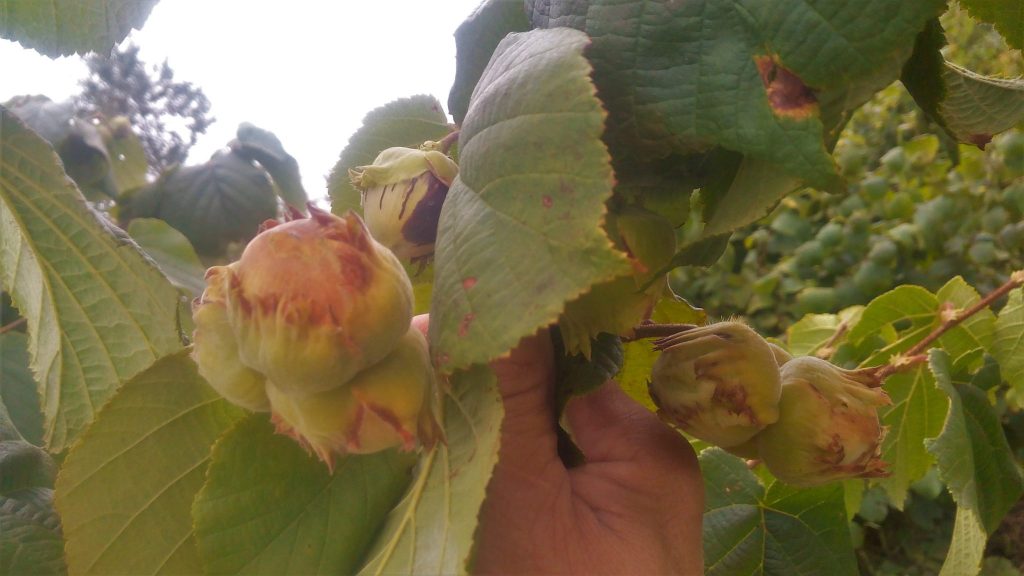
As discussed above, hazelnuts are vulnerable to many wild animals or birds, like squirrels, deer, and rabbits. Therefore, the best way to protect the young trees from the invasion of these creatures is to use a repellant spray or cover them using nets. Since you must be aware that the squirrels are too fond of hazelnuts, to ensure your fruit is saved, keep a regular check on trees.
Mites, moths, and filbert worms are some of the other common problems faced by hazelnut in their journey of growth and development. They can use the nuts and become parasites to derive nutrition from the hazelnuts.
Using Hazelnut Trees in Your Yard
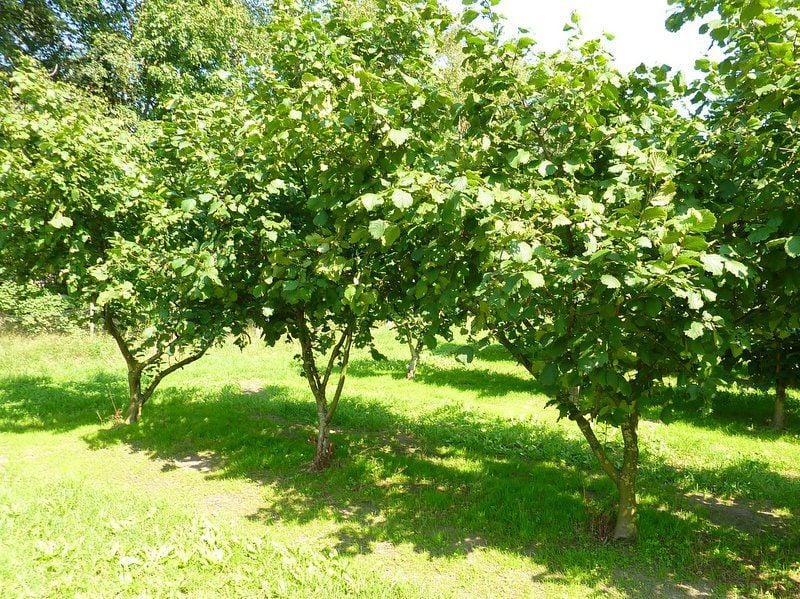
The Hazelnut tree happens to be known as one of the excellent hedging plants. The unique heart-shaped leaves with the margins turning into yellow or orange colour in the fall and the amazing-looking nut cases are an excellent addition to your garden.
It may fascinate you to know that sometimes European hazels are grown in a leftover corner of the plot. The trick is you just have to abandon some part of the plot where pests or animals can invade, such as squirrels. The intentionally leftover space regenerates naturally, and hazels grow from nuts cached by the squirrels in this undisturbed area. But beware, the squirrels will come to collect what they have sown.
Final Word
We can say that growing a hazelnut tree is not a cakewalk. In fact, growing a tree in itself is a task, and when it comes to hazelnut trees, the care and treatment become double. The growing conditions such as soil, water, fertilizers, light, and so on play a crucial role in the hazelnut tree development. But, if you are looking for a small tree or a shrub that catches the attention of everyone in your neighbourhood and is practical as well, then consider Hazelnut.
Planting your own tree and watching it grow through seasons sounds so overwhelming, and nothing can beat the magic of the moment when you will enjoy the first fruit of the hazelnut tree after four years of waiting and taking care of it.
So do not wait for any more. Get your tools ready, clear up the space in your garden, and start the planting process of Hazelnut trees!
Frequently Asked Questions
Can You Eat Hazelnuts From the Tree?
If you love to indulge yourself in the fresh flavours and moist texture, then consider eating the hazelnuts from the tree directly. However, the crunchiness will be enjoyed once the hazelnuts are dried. Also, it is advised to harvest the hazelnuts early to prevent the attack of the squirrels, as they are quite tempted by hazelnuts for their aroma.
How Long Does a Hazelnut Tree Take to Grow?
Depending upon the climatic conditions and your pruning techniques, Hazelnut trees can take five to six years, approximately to bear blooming flowers and edible nuts. However, you can also use well-grown saplings over the method of sowing the seeds to speed up the process a little.
Do You Need Two Hazelnut Trees for Nuts?
Though Hazelnut trees are monoecious, some European Hazels yield after cross-pollination. Always check thoroughly before you choose the cultivars for planting if they pollinate or not.
How to Make More Hazelnut Trees?
Who doesn’t love free plants? The more, the merrier. You can plant Hazelnut trees through seeds directly or buy a young plant from the local gardener to watch it grow into a beautiful big tree. Also, the branches can be used further to produce more trees by the process of layering.
How Do You Protect Your Hazelnut Tress?
Truck guards and Latex paint works wonders to rescue the plants from being attacked by a pest or other wild birds. They also prevent the herbicide fungi from infecting the plant and regulate the growth of the tree trunk as well. However, using a truck guard can lead to bark sensitivity taking away the chance of using it for planting other hazel trees, but the benefits of it can’t be ignored.

